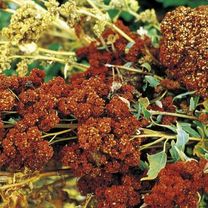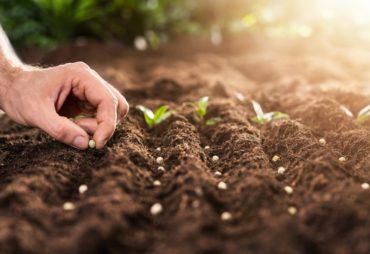Quinoa burst onto the foodie scene just a few years ago and is now considered a store cupboard staple. Although it may seem trendy and fashionable quinoa is certainly not a new food. It was grown and eaten thousands of years ago by the ancient Incas and revered as the “mother of all grains.”
So what’s so good about Quinoa?
Unusually for the plant world, quinoa is a complete protein in that it contains all of the essential amino acids. Gluten and cholesterol free quinoa is also high in fibre and contains an amazing array of minerals and vitamins.
Useful in balancing blood sugar levels quinoa is also very anti-inflammatory and good for maintaining muscles and strong bones. And one of the best things about quinoa is that is so quick and easy to cook! A great alternative to rice, couscous and bulgur wheat the fluffy texture and slightly nutty flavour can be used in a great many dishes.
Fancy Growing Your Own?
So, the UK may be very different from the Bolivian Andes but it is still fairly easy to grow your own quinoa. A close relative to the weed Fat Hen, quinoa copes well with our climate and will readily grow in the south and the far north.
First, buy your packet of quinoa seed. Although 100% germination is unlikely you will still harvest a good-sized crop.
As the young plants do look very weed-like it is best to sow your seed in rows and mark them carefully. It would be a great shame to weed them by mistake! Sow in April in a sunny spot and water well. Once large enough to handle thin the seedlings out to a distance of about 30cm between each plant.
Initially, growth is slow but then the plants will put on a sudden spurt and will reach a height of about 2 metres. Seed heads will then begin to form.
Harvesting
In early autumn the leaves will turn yellow and start to fall. This is the time when the colourful seed heads are ready for cutting. Remove the whole seed heads and pop them in a paper bag somewhere cool and dry for a couple of weeks to allow the seed to dry.
When dry gently rub the seed heads to remove the seed and pass it through a fine sieve to remove any chaff. Store your quinoa seed in an airtight jar and it will last for about a year. By which time your next crop will be ready!
As a defence against hungry birds, quinoa seed is coated with natural, bitter-tasting chemicals known as saponins. So, do give your home-grown quinoa seeds a good soak and a couple of rinses prior to cooking. Then open your recipe book and choose from one of the many ways to enjoy this superfood. Made all the more super because you have grown it yourself!
Last Updated on February 14, 2023 by Suttons Horticultural Team






How fo I grow my own Quinoa? What kind of conditions and what kind of soil is required? Please advise
I grew Huauzontle last year – a close relative of Quinoa. The leaves are edible and the flowers are great and a substitute for broccoli. I harvested the seed and I’m going to see if I can process it in the way described above.
I need quinoa and chia seed to grow where can l get it in the Uk or any other place thank
Hello, I am Jhon, PhD student al UPV, Spain; with English B1.2 level. I would like to know if there are some knowledge center of seeds, especially in quinoa or including andean crops around UK, because I would like to make a stay for three or four months.
Best wishes.